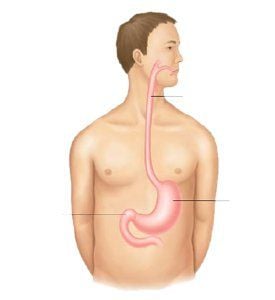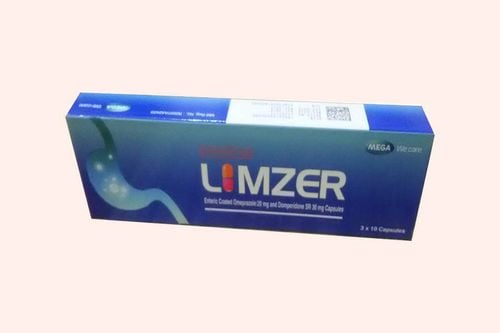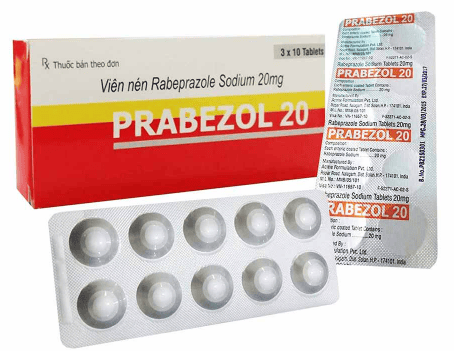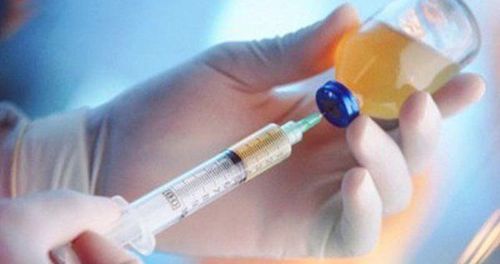This is an automatically translated article.
Rabosec medicine has the main ingredient Rabeprazole Sodium 20mg of the Proton pump inhibitor (PPI) class. Rabosec is commonly used in the treatment of gastric ulcers - duodenal ulcers, gastroesophageal reflux disease - oesophagitis, H. pylori infection,... Find out general information about ingredients, indications , contraindications, doses and side effects of Rabosec will help patients improve the effectiveness of treatment.1. What is Rabosec?
Rabosec 20 is made in the form of enteric coated tablets, with the main ingredients including:
Active ingredient: Rabeprazole (as Rabeprazole Sodium) 20mg. Excipients: Just enough for 1 tablet. Mechanism of action: Rabeprazole Sodium belongs to the group of antisecretory compounds, is a derivative of Benzimidazole, the drug has no anticholinergic mechanism or H2 histamine antagonist, but inhibits gastric acid secretion through specific inhibition of the enzyme H+/K+ - ATPase (acid pump or proton pump) on the surface of parietal cells of the stomach. Rabeprazole Sodium is rapidly absorbed following oral doses and is converted to the sulphenamide form by protonation and then reacts with the Systeines available in the proton pump.
2. Indications of the drug Rabosec
Rabosec is indicated for treatment in the following cases:
Active gastric and duodenal ulcers. Used in combination with antibiotics Amoxicillin and Clarithromycin in the treatment of Helicobacter pylori infection. Mouth ulcers. Gastroesophageal reflux disease (GERD) ulcerative or erosive form. Used in the maintenance treatment of gastroesophageal reflux disease (GERD). Zollinger-Ellison syndrome.
3. Contraindications of the drug Rabosec
Hypersensitivity to any ingredient of Rabosec. History of allergy to medicines that contain Rabeprazole Sodium. History of allergy to drugs of the gastric proton pump inhibitor (PPI) class. Pregnant women or women who are breastfeeding.
4. Dosage and how to use Rabosec
Dosage:
Adults; Active benign progressive gastric - duodenal ulcer: Take 1 tablet 20mg/time in the morning. Duration of treatment is 4-6 weeks or may be longer depending on the response of the patient. Gastroesophageal reflux disease (GERD) with ulcers or abrasions: Take 1 20mg tablet once daily for 4 to 8 weeks. Maintenance in gastroesophageal reflux disease: Take 10-20mg/time daily for 12 months. Zollinger - Ellison syndrome: Take 3 tablets of 60mg / time or 3 tablets of 60mg / time x 2 times a day. Treatment of H. Pylori infection: Use the regimen Rabeprazol Sodium (Rabosec) 20mg x 2 times daily, Amoxicillin 1g x 2 times daily, Clarithromycin 500mg x 2 times daily, with a treatment period of 7 days. Do not change the dose of Rabosec in patients who are elderly or have impaired renal function. Children: Rabosec is not recommended because clinical safety has not been established.
5. Notes when using Rabosec
Treatment with Rabosec with high dose or long term, can cause side effects such as:
Systemic: Allergic reaction, weakness, fever, chills, malaise, stiff neck, chest pain under the bones inhibition, photosensitivity reaction. Cardiovascular: Hypertension, abnormal electrocardiogram, migraine, fainting, angina, palpitations, sinus bradycardia, tachycardia. Gastrointestinal: flatulence, loss of appetite, mouth ulcers, dysphagia, nausea, abdominal pain, vomiting, increased appetite, dyspepsia, flatulence, glossitis, diarrhea or constipation, dry mouth, gastritis bowel, rectal bleeding, melena, gingivitis, cholecystitis, colitis, esophagitis, pancreatitis, proctitis. Endocrine: Hyperthyroidism or hypothyroidism. Blood - lymph: Anemia, ecchymosis, lymph node disease. Metabolic and nutritional disorders: Peripheral edema, weight gain or loss, dehydration. Musculoskeletal: Muscle pain, leg cramps, arthritis, bursitis. Nervous: Insomnia, anxiety, dizziness, dizziness, nervousness, somnolence, asthenia, hypertonia, neuralgia, convulsions, decreased libido and libido, paresthesia, tremor. Respiratory: Shortness of breath, asthma, nosebleeds, laryngitis, pneumonia. Skin and Appendages: Rash, pruritus, urticaria, diaphoresis, alopecia. Eyes and ears: Cataracts, glaucoma, dry eyes, decreased vision, tinnitus, otitis media. Genitourinary system: Cystitis, polyuria, dysuria, dysuria, uterine bleeding, dysmenorrhea. Laboratory values: Platelet abnormalities, albuminuria, creatinine phosphokinase increased, red blood cells abnormal, hypercholesterolemia, hyperglycemia, hyperlipidemia, hypokalemia, hyponatremia, leukocytosis, functional tests Abnormal liver function, elevated liver enzymes, abnormal urine. Rabosec should be discontinued when detecting the above symptoms, and at the same time notify the treating doctor and immediately go to the nearest medical facility for timely treatment.
Note the use of Rabosec in the following subjects:
Rabosec does not prevent the presence of malignancies in the gastrointestinal tract, so it is necessary to exclude malignancy before starting the drug. Rabosec for the patient. Pregnancy: According to the US Food and Drug Administration (FDA) there are no reports of safety regarding the use of Rabosec in pregnant women. Therefore, Rabosec is contraindicated in women who intend to or are pregnant. Lactation: There are currently no data indicating whether the active ingredient Rabeprazole Sodium contained in Rabosec can be excreted in human milk. Therefore, to ensure the safety of nursing infants, the use of Rabosec is contraindicated in this subject. Drivers or workers who operate machinery may experience side effects such as dizziness, weakness, nervousness, drowsiness, etc. while working. Therefore, avoid using Rabosec before and during work.
6. Rabosec drug interactions:
Interactions with other drugs:
Rabosec reduces the absorption of antifungal drugs such as Ketoconazole, Itraconazole. Avoid using Rabosec concomitantly with drugs such as Erlotinib, Delavirdin, Posaconazole, Nelfinavir. Erlotinib reduces the concentration and effect of: Atanazavir. Clopidogrel. Dabigatran. Etexilate. Dasatinib. Erlotinib. Indinavir. Iron salts. Mesalamine. Mycophenolate. Nelfinavir. Erlotinib increases the concentration and effect of: CYP2C19, CYP2C8 substrates. Methotrexate. Saquinavir. Voriconazole. Above is an overview of ingredients, indications, contraindications, dosage and notes when using Erlotinib. In order to bring the best treatment results for themselves and their families, patients should carefully read the instructions for using Erlotinib, and consult and guide the treating doctor before deciding to use it.













